Please enter through the main gate off Washington Avenue.
Looking for someone specific? Jump to the section of your choice or scroll to browse our database of Houston historical figures.
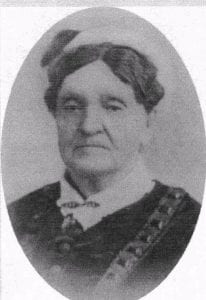 Regarded in Texan history as “the mother of Houston.” She used her inheritance, along with her husband Augustus C. Allen and his brother John Kirby Allen to purchase half a league of land along the Buffalo Bayou for $5,000 in 1836. A few days later they advertised this establishment as “Houston.” It is speculated that Charlotte was the one that suggested the name, after the Hero of San Jacinto. The name served to attract settlers to the area, helping lead to the decision to name Houston the capital of the Republic of Texas from 1837-1839.
Regarded in Texan history as “the mother of Houston.” She used her inheritance, along with her husband Augustus C. Allen and his brother John Kirby Allen to purchase half a league of land along the Buffalo Bayou for $5,000 in 1836. A few days later they advertised this establishment as “Houston.” It is speculated that Charlotte was the one that suggested the name, after the Hero of San Jacinto. The name served to attract settlers to the area, helping lead to the decision to name Houston the capital of the Republic of Texas from 1837-1839.
Charlotte and A. C. Allen went on to live next to Sam Houston for a number of years. Charlotte remained in Houston for the next 45 years, after she and Augustus separated in 1850. During the Civil War, Charlotte opened her home to be the headquarters for the commanding general of federal troops in Houston. In 1890, the Houston Post referred to her as “the connecting link between Houston’s past and present history.” Charlotte died in 1895 at the age of 90. Charlotte Baldwin Allen Elementary School was named after her in 1907, and was the first public school in Houston to be named for a woman. In 2009, a Texas Historical Marker was erected in her honor at Glenwood.
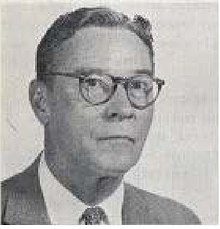 Attorney who served on the National Security Council from 1953 to 1960 and served as national security advisor to President Dwight Eisenhower. His hobby writing short stories earned him state and national awards.
Attorney who served on the National Security Council from 1953 to 1960 and served as national security advisor to President Dwight Eisenhower. His hobby writing short stories earned him state and national awards.
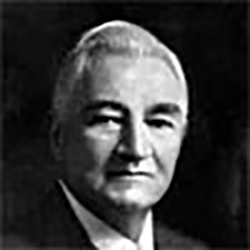 Lawyer known for representing railroads. In 1902, he co-founded the firm known today as Andrews Kurth LLP. Frank declined three appointments to the Texas bench, including the Texas Supreme Court in 1918. He also co-founded the Union Bank and Trust Company. Also notable, Frank was a developer of the Houston Ship Channel.
Lawyer known for representing railroads. In 1902, he co-founded the firm known today as Andrews Kurth LLP. Frank declined three appointments to the Texas bench, including the Texas Supreme Court in 1918. He also co-founded the Union Bank and Trust Company. Also notable, Frank was a developer of the Houston Ship Channel.
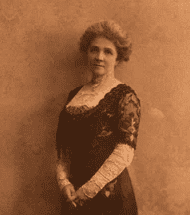 Founder and first president of the Houston Settlement Association, which with the support of Edith Ripley became a network of community development centers now known as BakerRipley.
Founder and first president of the Houston Settlement Association, which with the support of Edith Ripley became a network of community development centers now known as BakerRipley.
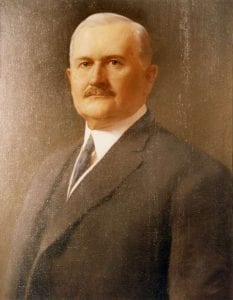 Known largely as Captain Baker after his honorary title in the social club Houston Light Guards, Captain James A. Baker was a Houston lawyer, banker and railroad man, and real estate developer over the course of his life.
Known largely as Captain Baker after his honorary title in the social club Houston Light Guards, Captain James A. Baker was a Houston lawyer, banker and railroad man, and real estate developer over the course of his life.
Most notably, he partnered with leading lawyers to create the law firm Baker, Botts, Lovett & Parker, known worldwide today as Baker Botts LLP. As a partner in the law firm, he was the personal attorney of millionaire William Marsh Rice. After his death, Captain Baker was key to unraveling the murder plot against Rice and plans to steal his estate. He brought to justice those responsible for Rice’s murder in 1900, thus saving the fortune that endowed Rice Institute (now Rice University). The Baker family continues to be an important part of Houston today.
Vermont native and war veteran who was recruited to join the Texas Revolution in 1836. He operated one of the famed “Twin Sisters” cannons in the Battle of San Jacinto and later patrolled South Texas to protect against Mexican invasion. In later life, Benson was elected constable and Harris County coroner.
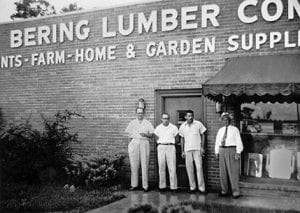 German immigrants who settled in Houston in 1846 and went into the hardware business. Additionally, in 1848 August Bering and his brother Conrad founded the German Congregation of the Methodist Church, renamed Bering Memorial United Methodist Church in 1911. Bering Lumber Company was founded in 1940 by August Bering Jr. before his death in 1943, and still exists as Bering’s today, run by August C. Bering V, with locations on Bissonett and Westheimer. Bering Drive in Houston was named after August C. Bering III (interred in 2004). Several generations of the Bering family reside at Glenwood.
German immigrants who settled in Houston in 1846 and went into the hardware business. Additionally, in 1848 August Bering and his brother Conrad founded the German Congregation of the Methodist Church, renamed Bering Memorial United Methodist Church in 1911. Bering Lumber Company was founded in 1940 by August Bering Jr. before his death in 1943, and still exists as Bering’s today, run by August C. Bering V, with locations on Bissonett and Westheimer. Bering Drive in Houston was named after August C. Bering III (interred in 2004). Several generations of the Bering family reside at Glenwood.
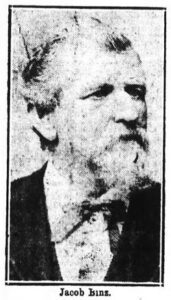 Real estate developer who built Houston’s first “skyscraper,” the six-story Binz Building, at Main and Texas in 1895.
Real estate developer who built Houston’s first “skyscraper,” the six-story Binz Building, at Main and Texas in 1895.
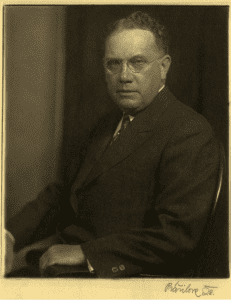 Robert Lee Blaffer was one of the co-founders of Humble Oil (now part of Exxon Mobil) and served as president from 1933-1937. His wife, Sarah Campbell Blaffer (1885-1975) was the daughter of Texaco’s founder, William Thomas Campbell. Texas Governor James Hogg called the marriage “the conglomerate of the century,” combining two of the largest oil fortunes, and according to Debrett’s Texas Peerage, Sarah Campbell was “the nearest equivalent of Texas royalty.”
Robert Lee Blaffer was one of the co-founders of Humble Oil (now part of Exxon Mobil) and served as president from 1933-1937. His wife, Sarah Campbell Blaffer (1885-1975) was the daughter of Texaco’s founder, William Thomas Campbell. Texas Governor James Hogg called the marriage “the conglomerate of the century,” combining two of the largest oil fortunes, and according to Debrett’s Texas Peerage, Sarah Campbell was “the nearest equivalent of Texas royalty.”
Sarah was a noted art patron and philanthropist, and the namesake of the Blaffer Art Museum at the University of Houston. In 1965 she founded The Sarah Campbell Blaffer Foundation to share her art collection, specifically with communities far from museums. The foundation’s art collection is on permanent exhibition at the Museum of Fine Arts, Houston and temporary exhibitions throughout Texas.
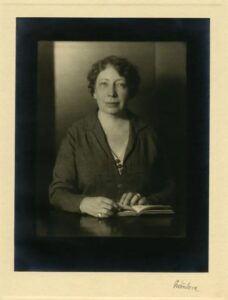 Beneficiary of two oil fortunes (those of her father, W.T. Campbell of the Texas Company and husband, R.L. Blaffer of Humble Oil), she amassed a wide-ranging art collection and donated works to the Museum of Fine Arts, Houston, and Blaffer Art Museum. Her Sarah Campbell Blaffer Foundation has introduced Texans to the visual arts since 1964.
Beneficiary of two oil fortunes (those of her father, W.T. Campbell of the Texas Company and husband, R.L. Blaffer of Humble Oil), she amassed a wide-ranging art collection and donated works to the Museum of Fine Arts, Houston, and Blaffer Art Museum. Her Sarah Campbell Blaffer Foundation has introduced Texans to the visual arts since 1964.
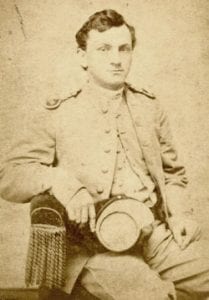 Colonel Walter Botts was a lawyer and Confederate infantry officer. He served as captain of Company A of the Fifth Texas Infantry, which was a part of Robert E. Lee’s famous Hood’s Texas Brigade. He earned his title of lieutenant colonel after a head injury at the battle of Seven Pines. Upon returning from the Civil War, Botts joined the law practice of his cousin Peter W. Gray in 1865, and then went on to establish the firm known today as Baker Botts LLP. Colonel Botts was a founding Director of Glenwood in 1871 and served as President from 1875 until 1886.
Colonel Walter Botts was a lawyer and Confederate infantry officer. He served as captain of Company A of the Fifth Texas Infantry, which was a part of Robert E. Lee’s famous Hood’s Texas Brigade. He earned his title of lieutenant colonel after a head injury at the battle of Seven Pines. Upon returning from the Civil War, Botts joined the law practice of his cousin Peter W. Gray in 1865, and then went on to establish the firm known today as Baker Botts LLP. Colonel Botts was a founding Director of Glenwood in 1871 and served as President from 1875 until 1886.
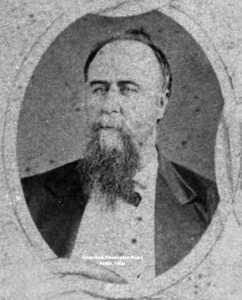 Lawyer, legislator, newspaperman and railroad executive, he was a tireless civic booster and supported improvements to the Houston Ship Channel. His extensive land holdings in east Houston included Brady’s Island at the Ship Channel Turning Basin.
Lawyer, legislator, newspaperman and railroad executive, he was a tireless civic booster and supported improvements to the Houston Ship Channel. His extensive land holdings in east Houston included Brady’s Island at the Ship Channel Turning Basin.
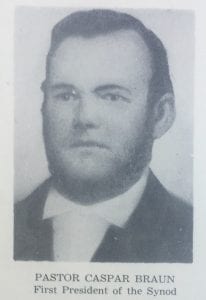 Coming to Houston in 1851 as a missionary of the English Lutheran Church of Pittsburg, Caspar began organizing Lutheran congregations and assisting them in obtaining charters. He organized the First German Evangelical Lutheran Church, where he served for thirty years. In 1851 a convention was held, and the First Evangelical Lutheran Synod of Texas was established. At 29 years old, Caspar Braun was the oldest pastor in Texas and was elected president of the synod. An official Texas Historical Marker was placed on his grave at Glenwood.
Coming to Houston in 1851 as a missionary of the English Lutheran Church of Pittsburg, Caspar began organizing Lutheran congregations and assisting them in obtaining charters. He organized the First German Evangelical Lutheran Church, where he served for thirty years. In 1851 a convention was held, and the First Evangelical Lutheran Synod of Texas was established. At 29 years old, Caspar Braun was the oldest pastor in Texas and was elected president of the synod. An official Texas Historical Marker was placed on his grave at Glenwood.
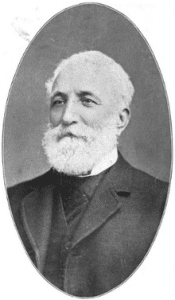 Paul came to Houston in 1842 and, staking his personal funds on the venture, is credited with bringing railroads to Houston and establishing the city as the rail commerce center of Southeast Texas. He was the founder and president of Houston’s first railroad, the Houston & Texas Central, as well as founder and president of the Houston East & West Texas Railway. The town of Bremond in Robertson County and Bremond streets in Houston, Lufkin, and Nacogdoches are all named for him.
Paul came to Houston in 1842 and, staking his personal funds on the venture, is credited with bringing railroads to Houston and establishing the city as the rail commerce center of Southeast Texas. He was the founder and president of Houston’s first railroad, the Houston & Texas Central, as well as founder and president of the Houston East & West Texas Railway. The town of Bremond in Robertson County and Bremond streets in Houston, Lufkin, and Nacogdoches are all named for him.
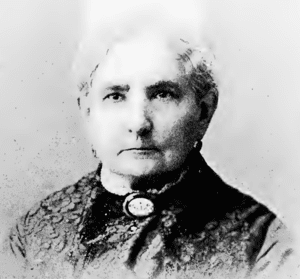 Mary Jane was a civic leader and founder of the Daughters of the Republic of Texas, which is one of the oldest in the nation and one of the oldest patriotic women’s organizations in Texas. She was known by many as the “Belle of the Bayou.” Mary Jane was instrumental in the preservation of the San Jacinto Battleground, a charter member of Texas State Historical Association, and founder of Sheltering Arms, a home for women in Houston. She was the widow of Andrew Briscoe, a signer of the Texas Declaration of Independence, and daughter of John R. Harris, founder of Harrisburg, for whom Harris County is named.
Mary Jane was a civic leader and founder of the Daughters of the Republic of Texas, which is one of the oldest in the nation and one of the oldest patriotic women’s organizations in Texas. She was known by many as the “Belle of the Bayou.” Mary Jane was instrumental in the preservation of the San Jacinto Battleground, a charter member of Texas State Historical Association, and founder of Sheltering Arms, a home for women in Houston. She was the widow of Andrew Briscoe, a signer of the Texas Declaration of Independence, and daughter of John R. Harris, founder of Harrisburg, for whom Harris County is named.
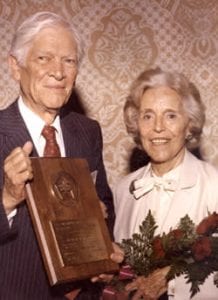 Brothers George Rufus Brown and Herman Brown co-founded a construction firm later called Brown & Root, Inc. By the 1950s it was one of the largest construction companies in the world. Notable projects include the Gulf Freeway from Houston to Galveston, the Pontchartrain Bridge, the Lyndon B. Johnson Space Center, and Rice Stadium. The brothers went on to form Brown Shipbuilding on the Houston Ship Channel in 1942, which built over 350 ships during World War II and was awarded a presidential citation. In 1947, the brother’s newly formed Texas Eastern Transmission Corporation, purchased Big Inch Little Inch, for $142 million. These two key pipelines, running from East Texas to the Northeast, played a significant role in Houston’s development as a leader in oil & gas. In 1962, Brown & Root was sold to Halliburton.
Brothers George Rufus Brown and Herman Brown co-founded a construction firm later called Brown & Root, Inc. By the 1950s it was one of the largest construction companies in the world. Notable projects include the Gulf Freeway from Houston to Galveston, the Pontchartrain Bridge, the Lyndon B. Johnson Space Center, and Rice Stadium. The brothers went on to form Brown Shipbuilding on the Houston Ship Channel in 1942, which built over 350 ships during World War II and was awarded a presidential citation. In 1947, the brother’s newly formed Texas Eastern Transmission Corporation, purchased Big Inch Little Inch, for $142 million. These two key pipelines, running from East Texas to the Northeast, played a significant role in Houston’s development as a leader in oil & gas. In 1962, Brown & Root was sold to Halliburton.
After Herman’s death in 1962, George R. Brown went on to serve as a director of the Halliburton Company, Armco Steel Corporation, Louisiana Land and Exploration Company, International Telephone and Telegraph Corporation, Trans-World Airlines, Southland Paper Company, First City Bancorporation, and Highland Oil Company.
George R. Brown was influential in politics and both Brown brothers are credited with the rise of Lyndon B. Johnson from congressman to president. The George R. Brown Convention Center and George R. Brown School of Engineering at Rice University most notably bear his name. At the time of his death in 1983, his fortune valued around $90 million made him one of the wealthiest men in the US.
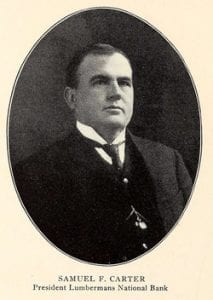 Samuel Carter was an American lumberman and in 1907 founded the Lumberman’s National Bank (later Second National Bank). Carter was the owner and builder of Houston’s tallest building erected in 1911. The 16-story Carter Building was said to be the most modern structure in the South at the time and was sometime referred to by locals as “Carter’s Folly” because the height was thought to be unsafe. The building was later expanded to 22 stories in 1920 and by the 1960s a marble and glass façade was added for a “modernized” look. In 2013, with its renovation to the J.W. Marriott Hotel, the façade was removed to restore the building to its original look.
Samuel Carter was an American lumberman and in 1907 founded the Lumberman’s National Bank (later Second National Bank). Carter was the owner and builder of Houston’s tallest building erected in 1911. The 16-story Carter Building was said to be the most modern structure in the South at the time and was sometime referred to by locals as “Carter’s Folly” because the height was thought to be unsafe. The building was later expanded to 22 stories in 1920 and by the 1960s a marble and glass façade was added for a “modernized” look. In 2013, with its renovation to the J.W. Marriott Hotel, the façade was removed to restore the building to its original look.
Carter was one of the best-known lumbermen in the southwest, with large holdings in East Texas. He invented a portable steel saw mill that could be moved to follow the forest. The Carter’s built a house at 14 Courtland Place in 1906, designed by notable architect Birdsall Briscoe. Courtland Place is of interest as it consists of a single street that is a residential street, subdivision and a Historic District all at one location that is owned by the residents, not the City of Houston.
Carter’s adopted son, William Thomas Carter, Jr. (1887-1957) with his wife Lillie Auguste Neuhaus Carter, also built a house at 18 Courtland Place. Their house, designed by Briscoe and Olle Lorehn, was one of the few houses to reflect the Prairie style and is a National Register building and City Landmark.
Carter Jr. created Houston’s first public airport, W. T. Carter Field. The airport was privately owned for 10 years before it was bought by the city and renamed in honor of Governor William P. Hobby after his death in 1967. Carter Jr. also developed the Garden Villas subdivision and Sherwood Forest. He was a member of the Houston Port Commission from 1925-1935 and served on the Houston City Council from 1942-1946.
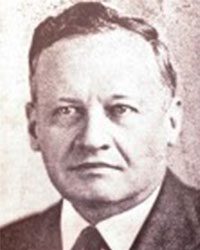
Longtime executive with Houston Lighting & Power Co., he was involved with many civic organizations and chaired the building committee for the San Jacinto Monument. A power plant in Southwest Houston is named for him.
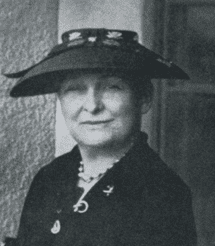 Wife of Will Clayton. The couple donated their home as the Clayton Center for Genealogical Research and ensured ongoing community support through the Clayton Fund and Susan Vaughan Foundation.
Wife of Will Clayton. The couple donated their home as the Clayton Center for Genealogical Research and ensured ongoing community support through the Clayton Fund and Susan Vaughan Foundation.
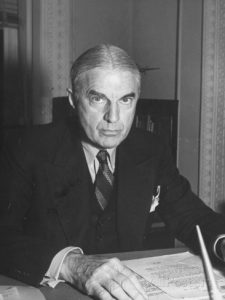 William Clayton served as the Undersecretary of State for Economic Affairs following WWII, and is most known for authoring “The Marshall Plan” that averted global economic disaster in the post-war years. Newsweek called him “the principal architect of American post-war foreign economic policy.”
William Clayton served as the Undersecretary of State for Economic Affairs following WWII, and is most known for authoring “The Marshall Plan” that averted global economic disaster in the post-war years. Newsweek called him “the principal architect of American post-war foreign economic policy.”
Before his time in politics, Clayton worked for the American Cotton Company in New York from the age of 16 to 24. With this experience he formed his own cotton business in 1904, Anderson, Clayton and Company, and its headquarters were moved to Houston in 1916. The firm was uniquely and strategically operated and experienced great success.
During World War I, he served on the Committee of Cotton Distribution of the War Industries Board and during World War II was again called to Washington to serve as the deputy to the coordinator of inter-American affairs. During the war he held positions in various wartime agencies, the Department of Commerce and with the Export-Import Bank. After the war, from the end of 1944 to 1947, he served as the Undersecretary of State for Economic Affairs following WWII, and it was there that he became the principal author of the European Recovery Plan, or “The Marshall Plan”. The plan was very successful and contributed significantly to the recovery of western Europe and its industries.
With his wife, Susan Vaughan Clayton, they were generous contributors of both time and money.
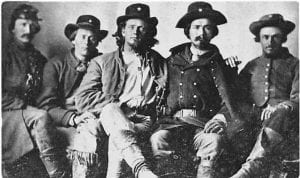 One of Houston’s wealthiest wholesale grocers and leading cotton exporter. W.D. Cleveland served with the Eight Texas Calvary, better known as Terry’s Texas Rangers, in Company B during the Civil War. Terry’s Texas Rangers were a group of volunteers for the Confederate Army and was the best known regiment (aside from Hood’s Texas Brigade) to serve in the Civil War.
One of Houston’s wealthiest wholesale grocers and leading cotton exporter. W.D. Cleveland served with the Eight Texas Calvary, better known as Terry’s Texas Rangers, in Company B during the Civil War. Terry’s Texas Rangers were a group of volunteers for the Confederate Army and was the best known regiment (aside from Hood’s Texas Brigade) to serve in the Civil War.
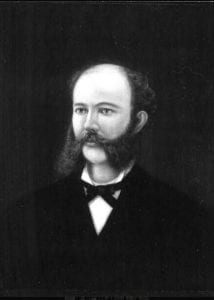 Daniel Denton Cooley was a real estate developer and businessman, most famously known as “The Father of the Heights.” In 1892 he partnered with O.M. Carter in founding Houston Heights which was, at the time, one of the first planned communities in Texas and one of the largest real estate projects in the United States.
Daniel Denton Cooley was a real estate developer and businessman, most famously known as “The Father of the Heights.” In 1892 he partnered with O.M. Carter in founding Houston Heights which was, at the time, one of the first planned communities in Texas and one of the largest real estate projects in the United States.
The former Cooley residence in the Heights was donated in to build the Daniel Cooley Elementary School in 1890, one of the only schools to be named after a living person. Although the school was closed against neighborhood wishes in 1970, a Texas Historical Marker for Cooley was added in 2014 where the school once stood.
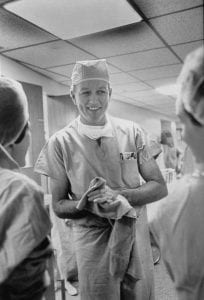 Dr. Denton A. Cooley was an American cardiothoracic surgeon who is most famously known for performing the first total artificial heart implantation in 1969. Dr. Cooley is also famously known for his 40-year feud with mentor and partner Dr. DeBakey after this controversial artificial heart transplant (the device is on display at the Smithsonian in Washington).
Dr. Denton A. Cooley was an American cardiothoracic surgeon who is most famously known for performing the first total artificial heart implantation in 1969. Dr. Cooley is also famously known for his 40-year feud with mentor and partner Dr. DeBakey after this controversial artificial heart transplant (the device is on display at the Smithsonian in Washington).
Dr. Cooley also performed the first heart transplant in the US in 1968, the first lung and heart transplant to the same patient in 1969, and pioneered countless heart and blood vessel surgical techniques. Dr. Cooley has said that “if there is any contribution I should be recognized for,” it is reducing the need for blood transfusions in open-heart operations. Cooley was awarded the Presidential Medal of Freedom in 1984, the highest award a civilian can receive, by President Reagan for “charting new territory in his search for ways to prolong and enrich human life.”
Cooley was also founder and surgeon in-chief of The Texas Heart Institute at St. Luke’s Hospital, chief of Cardiovascular Surgery at clinical partner Baylor St. Luke’s Medical Center, consultant in Cardiovascular Surgery at Texas Children’s Hospital and a clinical professor of Surgery at the University of Texas Health Science Center at Houston.
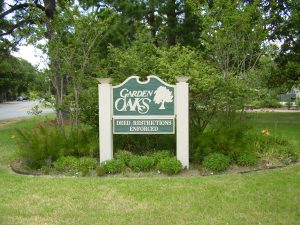
Prolific developer of subdivisions, including Southside Place and Garden Oaks, a middle-class neighborhood in which he incorporated features, by designers such as Hare & Hare, more common to upscale neighborhoods. He was also an innovator in the manufacture of catalog homes.
When the Depression halted home construction, he was again an innovator, diversifying into pre-fabricated buildings for the oil industry, plus design and construction of portable restaurants for the Houston-based Toddle House chain. When WWII again stopped home construction, he converted his company to war work and it survived to take advantage of the post-war housing boom. Edloe Street in Houston is named after Edward Lillo Crain, Sr., and Ella Boulevard after his wife.
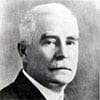 Joseph S. Cullinan was an oilman who founded the Magnolia Petroleum Company (now part of Mobil Oil) and founded The Texas Company (now part of Chevron/Texaco), after Spindletop. Cullinan moved Texaco’s headquarters to Houston in 1905, which was key in establishing the city dominance in the oil industry. Cullinan was also the developer of Shadyside, an exclusive subdivision built on 38-acres that Cullinan purchased. Other notable positions Cullinan held include President of the Houston Chamber of Commerce and special advisor to The Food Administration under President Hoover during World War I.
Joseph S. Cullinan was an oilman who founded the Magnolia Petroleum Company (now part of Mobil Oil) and founded The Texas Company (now part of Chevron/Texaco), after Spindletop. Cullinan moved Texaco’s headquarters to Houston in 1905, which was key in establishing the city dominance in the oil industry. Cullinan was also the developer of Shadyside, an exclusive subdivision built on 38-acres that Cullinan purchased. Other notable positions Cullinan held include President of the Houston Chamber of Commerce and special advisor to The Food Administration under President Hoover during World War I.
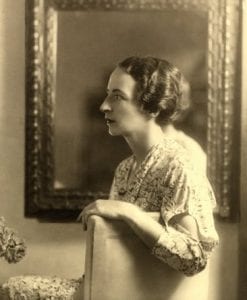 Nina Cullinan was a philanthropist and patron of the arts, and daughter of Joseph S. Cullinan. Her philanthropy extended to many sectors: arts, mental health and park land.
Nina Cullinan was a philanthropist and patron of the arts, and daughter of Joseph S. Cullinan. Her philanthropy extended to many sectors: arts, mental health and park land.
She was a founding member of the Contemporary Arts Museum and the Houston Ballet Foundation, a leading benefactor of the Houston Symphony Orchestra, and served on the board of the MFAH among other art institutions, the Houston Mental Health Society, and the National Parks Commission.
She is best known for her gift to the Museum of Fine Arts-Houston for the building of Cullinan Hall, which opened in 1958. She also willed half of her $4 million estate to the Houston Parks Board for development of new park space.
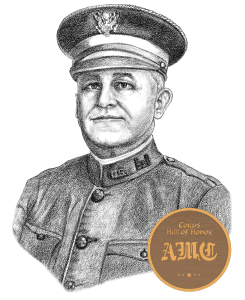 Edward B. Cushing, son of E. H. Cushing (owner of the Telegraph), is most notably known for his service to the Agricultural and Mechanical College of Texas, now Texas A&M University.
Edward B. Cushing, son of E. H. Cushing (owner of the Telegraph), is most notably known for his service to the Agricultural and Mechanical College of Texas, now Texas A&M University.
He was the class of 1880 and upon graduation served in the US Army where he was a colonel and advising engineer and was awarded distinguished service medals from France, Belgium and Italy.
As Chairman of the Texas A&M Board of Regents in 1912, her personally bankrolled the University, successfully preventing the school’s consolidation with The University of Texas at Austin. The E.B. Cushing Library and newly added E.B. Cushing Stadium for track and field at Texas A&M are named in his honor.
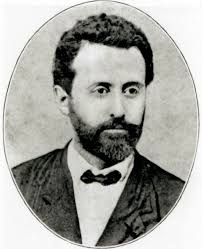 Edwards Hopkins Cushing was a publisher, collector of books and a notable horticulturalist. He was the editor of the Telegraph (formerly the Telegraph and Texas Register, as established in 1835 before Texas was a republic) and one of Houston’s first established booksellers. Cushing printed some of the only books available in the South during the Civil War, and the Telegraph even resorted to using wallpaper and butcher’s paper at times to ensure publication was never suspended during the war. On the horticulturalist front, the flowers at his estate were “among the most complete collections in the US.”
Edwards Hopkins Cushing was a publisher, collector of books and a notable horticulturalist. He was the editor of the Telegraph (formerly the Telegraph and Texas Register, as established in 1835 before Texas was a republic) and one of Houston’s first established booksellers. Cushing printed some of the only books available in the South during the Civil War, and the Telegraph even resorted to using wallpaper and butcher’s paper at times to ensure publication was never suspended during the war. On the horticulturalist front, the flowers at his estate were “among the most complete collections in the US.”
Frenchman who moved to Houston in 1837 and became the city’s first trained architect.
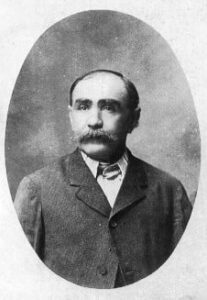 Retired butcher who spent his later years filling 13 notebooks with collages, drawings and watercolor paintings depicting fantastical airships. Forgotten for more than 40 years after his death, Dellschau’s notebooks eventually caught the attention of the art world. His work is now in the collections of museums including the Menil Collection, the Philadelphia Museum of Art, and the American Folk Art Museum.
Retired butcher who spent his later years filling 13 notebooks with collages, drawings and watercolor paintings depicting fantastical airships. Forgotten for more than 40 years after his death, Dellschau’s notebooks eventually caught the attention of the art world. His work is now in the collections of museums including the Menil Collection, the Philadelphia Museum of Art, and the American Folk Art Museum.
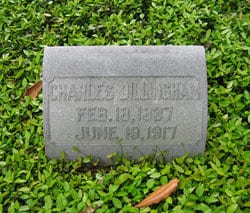 After serving as a colonel in the Union army during the Civil War, Dillingham made his way to Houston where he was a banker and railroad man. When the South Texas National Bank was formed, he became first vice-president and later was promoted to president, then chairman of the board. His home at 3214 Austin was donated to serve as headquarters of the Child Guidance Center.
After serving as a colonel in the Union army during the Civil War, Dillingham made his way to Houston where he was a banker and railroad man. When the South Texas National Bank was formed, he became first vice-president and later was promoted to president, then chairman of the board. His home at 3214 Austin was donated to serve as headquarters of the Child Guidance Center.
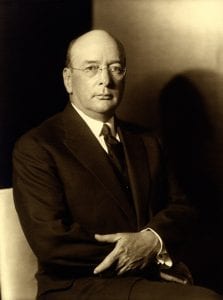 William Stamps Farish II was an oilfield pioneer and a member of the influential Farish family. In 1917, Farish provided the $1 million in capital for Humble Oil (now part of Exxon Mobil) to be incorporated and reorganized as Humble Oil and Refining Company. Farish served as vice-president and later, in 1922, became president. Standard Oil (later Exxon) paid $17 million for 50% of Humble in 1919, this capital allowed Humble to build one of the world’s largest refineries in Baytown. Farish was appointed to serve as chairman of Standard Oil by John D. Rockefeller and went on to become president of Standard Oil from 1922- serve as the chairman of the board of Standard oil and become one of the founders of the American Petroleum Institute and serve as president in 1926.
William Stamps Farish II was an oilfield pioneer and a member of the influential Farish family. In 1917, Farish provided the $1 million in capital for Humble Oil (now part of Exxon Mobil) to be incorporated and reorganized as Humble Oil and Refining Company. Farish served as vice-president and later, in 1922, became president. Standard Oil (later Exxon) paid $17 million for 50% of Humble in 1919, this capital allowed Humble to build one of the world’s largest refineries in Baytown. Farish was appointed to serve as chairman of Standard Oil by John D. Rockefeller and went on to become president of Standard Oil from 1922- serve as the chairman of the board of Standard oil and become one of the founders of the American Petroleum Institute and serve as president in 1926.
Farish married Libbie Randon Rice, granddaughter of Walter Browne Botts, in 1911. They lived in Shadyside, developed by their friend J.S. Cullinan.
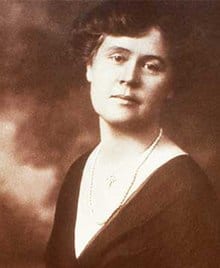 Educated at Wellesley and Columbia, Annette assumed active management of her father’s business interests upon his death in 1909 but she is best remembered as a suffragist and philanthropist. The Texas Woman Suffrage Association was established in her home in 1903, and she served as president from 1904-1906.
Educated at Wellesley and Columbia, Annette assumed active management of her father’s business interests upon his death in 1909 but she is best remembered as a suffragist and philanthropist. The Texas Woman Suffrage Association was established in her home in 1903, and she served as president from 1904-1906.
The movement lost momentum in Houston when Finnigan moved away from the city, but it resumed on her return in 1909 when she organized the Woman’s Political Union and was elected state president. She spent the winter of 1915 in Austin lobbying for an equal suffrage bill which finally passed three years later.
Fox was a private banker, and later served as president of Houston National Bank in 1892. During the Civil War he was a blockade runner. Fox also served on the first board of directors of Houston Cotton Exchange and Board of Trade.
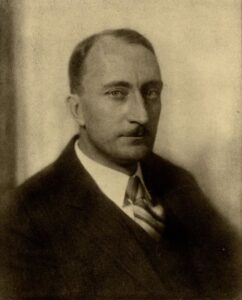 Architect who became one of the most prolific designers in mid-century Houston. His works included the landmark Prudential Building and Foley’s department store, both demolished.
Architect who became one of the most prolific designers in mid-century Houston. His works included the landmark Prudential Building and Foley’s department store, both demolished.
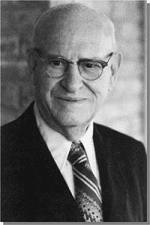 John Henry Freeman was a prominent lawyer, becoming a partner at Fulbright, Crooker and Freeman in 1924, that developed into one of the largest law firms. As an original trustee of the M. D. Anderson Foundation, he is credited with co founding the Texas Medical Center. He remained a trustee of the M. D. Anderson Foundation until his death in 1980.
John Henry Freeman was a prominent lawyer, becoming a partner at Fulbright, Crooker and Freeman in 1924, that developed into one of the largest law firms. As an original trustee of the M. D. Anderson Foundation, he is credited with co founding the Texas Medical Center. He remained a trustee of the M. D. Anderson Foundation until his death in 1980.
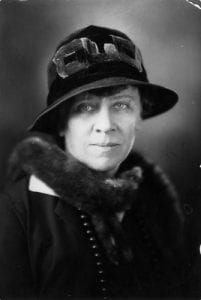 Mary was a home economist and educator. She was instrumental in starting the first kindergarten class in Houston and she established Houston’s first home economics program, which was one of the earliest in the state. In 1912, she established the School of Domestic Economy at the University of Texas. She was the first female full professor and department chairman at the University of Texas.
Mary was a home economist and educator. She was instrumental in starting the first kindergarten class in Houston and she established Houston’s first home economics program, which was one of the earliest in the state. In 1912, she established the School of Domestic Economy at the University of Texas. She was the first female full professor and department chairman at the University of Texas.
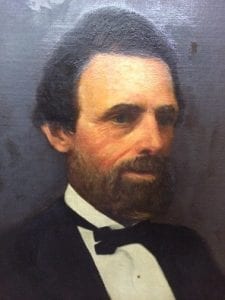 Lawyer Peter W. Gray is the son of Colonel William Fairfax Gray, an even earlier Houston lawyer, and is most famously know for establishing the law firm now known as Baker Botts. Peter served as a captain in the Army of the Republic of Texas in the late 1830s. He went on to serve as the District Attorney of Houston, as appointed by Sam Houston, until Texas was admitted to the Union in 1845. In 1848 he became a founder of the Houston Lyceum, now the Houston Public Library.
Lawyer Peter W. Gray is the son of Colonel William Fairfax Gray, an even earlier Houston lawyer, and is most famously know for establishing the law firm now known as Baker Botts. Peter served as a captain in the Army of the Republic of Texas in the late 1830s. He went on to serve as the District Attorney of Houston, as appointed by Sam Houston, until Texas was admitted to the Union in 1845. In 1848 he became a founder of the Houston Lyceum, now the Houston Public Library.
He served in a number of other public offices, including Houston representative in the first Confederate House of Representatives, District Judge of Harris County, and member of the Texas Senate. He was a founder and the first president of the Houston Bar Association. After the Civil War, Gray partnered with his cousin Walter Browne Botts to form a law firm that later became known as Gray, Baker & Botts, when Judge James A. Baker joined the firm in 1872, and is still a highly regarded law firm worldwide known as Baker & Botts. Gray had to withdraw from the firm after his appointment to the Supreme Court of Texas in 1874, which was when the firm became known as Baker & Botts, shortly before his death. Gray County was named in his honor in 1876 after his death.
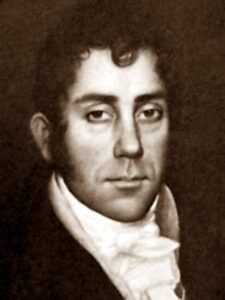 Colonel William Fairfax Gray was an early Houston lawyer, soldier in the War of 1812 and author. Although he tried and failed to be the secretary for the Convention of 1836, his detailed diary is a valuable historical record, that is more complete that the official record in some cases. of the Convention of 1836 at He served in numerous public offices, as a member of the Congress of the Republic of Texas, clerk of the House of Representatives, secretary of the Senate, and clerk of the Texas Supreme Court. Colonel Gray circulated a petition in 1839 that led to founding of Christ Church Cathedral and was a charter member of Philosophical Society of Texas. His remains were moved to Glenwood Cemetery, when it opened in 1872.
Colonel William Fairfax Gray was an early Houston lawyer, soldier in the War of 1812 and author. Although he tried and failed to be the secretary for the Convention of 1836, his detailed diary is a valuable historical record, that is more complete that the official record in some cases. of the Convention of 1836 at He served in numerous public offices, as a member of the Congress of the Republic of Texas, clerk of the House of Representatives, secretary of the Senate, and clerk of the Texas Supreme Court. Colonel Gray circulated a petition in 1839 that led to founding of Christ Church Cathedral and was a charter member of Philosophical Society of Texas. His remains were moved to Glenwood Cemetery, when it opened in 1872.
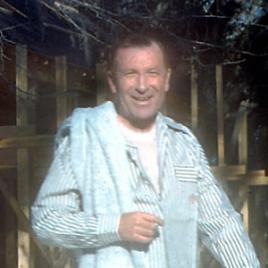 Gunn was one of the first practicing landscape architects in Texas. His work includes the site layout and gardens at Rienzi, St. John’s Church, First Christian Church, and the grounds of the Shamrock Hotel. Another one of his notable project included doing the landscape design at Harris Masterson III’s home, Rienzi, which is now part of the Museum of Fine Arts, Houston. At the height of his career, Gunn designed more than 200 landscapes in River Oaks. He is also credited with bringing modernism and tropical plants to the Houston landscape in the post-WWII era
Gunn was one of the first practicing landscape architects in Texas. His work includes the site layout and gardens at Rienzi, St. John’s Church, First Christian Church, and the grounds of the Shamrock Hotel. Another one of his notable project included doing the landscape design at Harris Masterson III’s home, Rienzi, which is now part of the Museum of Fine Arts, Houston. At the height of his career, Gunn designed more than 200 landscapes in River Oaks. He is also credited with bringing modernism and tropical plants to the Houston landscape in the post-WWII era
Railroad promoter and civil servant DeWitt Clinton Harris is the son of John R. Harris, founder of Harrisburg and the man for whom Harris County is named. He served as regidor, first county clerk, and alderman of Harrisburg, as well as postmaster for a number of years. He was also a charter member of the first Houston Chamber of Commerce (incorporated in 1840). Most notably, he was imprisoned in 1835 by Mexican customs officials at Anahuac, an incident that marked the beginning of open hostilities between the Texans and Mexico. His remains were moved to Glenwood Cemetery in 1913.
German immigrant who took over operation of her husband Marcel’s German-language newspaper, Texas Deutsche Zeitung, on his death in 1885. She became one of a few female members of the Texas Press Association and published the paper until she died.
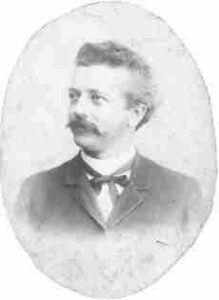
Houston architect who designed numerous public buildings starting in the 1870s, including courthouses across Texas.
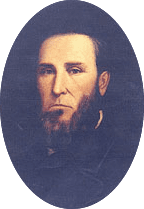
Lawyer and legislator who served a 28-day term as the fourth governor of Texas in 1853. His 44-foot obelisk was said to be the largest single stone ever erected in the U.S. when it was placed in 1931.
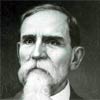 George Hermann, well known Houston philanthropist, whose name adorns well known institutions such as Hermann Hospital, Hermann Park, and Hermann Square at City Hall. George came from humble beginnings, and after serving in the Confederate Army, got involved in the cattle business, rising from cattle driver to partner at a brokerage firm. He dealt in real estate, and struck a different kind of gold when his tract of land was at the center of the big Humble oil field that was discovered.
George Hermann, well known Houston philanthropist, whose name adorns well known institutions such as Hermann Hospital, Hermann Park, and Hermann Square at City Hall. George came from humble beginnings, and after serving in the Confederate Army, got involved in the cattle business, rising from cattle driver to partner at a brokerage firm. He dealt in real estate, and struck a different kind of gold when his tract of land was at the center of the big Humble oil field that was discovered.
He lived very frugally, and over the years amassed a great fortune worth several million. He donated 10 acres of land and the bulk of his $2.6 million estate to establish a charitable hospital (Hermann Hospital). He donated another 285 acres that is now Hermann Park and the site of the Houston Zoo and a small parcel at the site of his childhood home in front of City Hall, dedicated to his mother, now Hermann Square. A bronze statue of George Hermann was added to Herman Park in 1981. Additionally, he donated land to the Houston Art League for a museum that is now the Museum of Fine Arts, Houston.
George Hermann’s greatest joy was bestowing gifts to the city of Houston. When he donated the land for Hermann Park, he said that it was the happiest day of his life.
The only person to have been Texas Secretary of State, Texas Attorney General, and Chief Justice of the Texas Supreme Court.
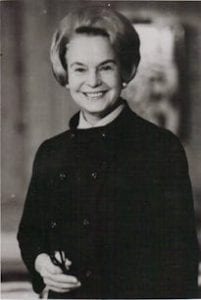 The achievements and influence of Oveta Culp Hobby earned her an induction into the National Women’s Hall of Fame in 1996, after her death in 1995. She became manager of one of the nation’s major newspapers, the Houston Post. In 1931, Oveta (26) married Former Texas Governor William P. Hobby (53).
The achievements and influence of Oveta Culp Hobby earned her an induction into the National Women’s Hall of Fame in 1996, after her death in 1995. She became manager of one of the nation’s major newspapers, the Houston Post. In 1931, Oveta (26) married Former Texas Governor William P. Hobby (53).
She held a number of public servant roles including, serving as the parliamentarian for the Texas House of Representatives at the age of 21, Director of the Women’s Interest Section of the War Department where she organized the Women’s Auxiliary Army Corp (WACC) during WWII (later Women’s Army Corps WACS). She went on to become America’s first female Colonel. In 1945, she received the Distinguished Service Medal for her outstanding service. In 1937, she wrote and published a book, Mr. Chairman, about her activities at the Texas State Legislature, which was used as a textbook throughout Texas.
Mrs. Hobby served on countless boards, including Rice University, the Bank of Texas, the Houston Symphony Society, the Corporation for Public Broadcasting, the Museum of Fine Arts, Houston, the American National Red Cross, the American Cancer Society, the American Assembly, and in 1948 she was a member of the US delegation to the UN Conference on Freedom of Information and the Press in Geneva, Switzerland. From 1952-1955 she played a pioneering role as the first Secretary of the Department of Health, Education and Welfare under President Dwight D. Eisenhower, the only woman to serve in his Cabinet.
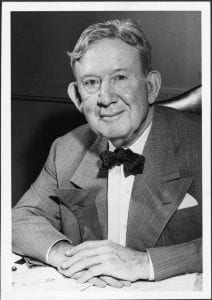 William P. Hobby served as the youngest governor of Texas from 1917-1919 at age 39. As governor during WWI he set up an “effective military draft system” for Texas. He had a productive administration, passing measures regarding state aid, education and oil and gas. In 1931, Former Governor Hobby married the impressive Oveta Culp Hobby (1905-1995).
William P. Hobby served as the youngest governor of Texas from 1917-1919 at age 39. As governor during WWI he set up an “effective military draft system” for Texas. He had a productive administration, passing measures regarding state aid, education and oil and gas. In 1931, Former Governor Hobby married the impressive Oveta Culp Hobby (1905-1995).
Hobby was a well-known publisher before his role as governor, and after losing reelection in 1924, he was elected president of the Houston Post. He went on to serve as chairman of the Houston Post Company, which acquired radio and television stations, including KPRC. Her became chairman in 1955 and Oveta served as president and editor.
The international airport in downtown Houston, William P. Hobby Airport, was named after him in 1967, as well as Hobby Elementary School in Houston.
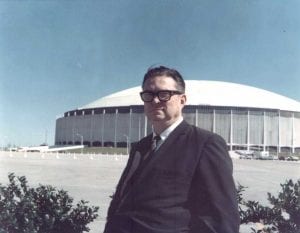 Although popularly known as Judge Hofheinz or “The Judge,” Roy Hofheinz’s Houston legacy extends far beyond his time served as a Harris County Judge. He served two terms as Mayor of Houston, and was sometimes referred to as the “boy Mayor,” because at 23, he was the youngest mayor in Texas.
Although popularly known as Judge Hofheinz or “The Judge,” Roy Hofheinz’s Houston legacy extends far beyond his time served as a Harris County Judge. He served two terms as Mayor of Houston, and was sometimes referred to as the “boy Mayor,” because at 23, he was the youngest mayor in Texas.
His other political roles included serving as campaign manager for Lyndon B. Johnson in his Congress runs. After WWII, Roy built a network of radio and television stations and pioneered FM radio. Roy co-founded the Houston Sports Association, which brought major league baseball franchise the Houston Colt 45s to Houston, which later became the Houston Astros.
Perhaps his most notable achievement was building the Astrodome, the first large covered baseball and football stadium in the world, often called the “Eight Wonder of the World.” His personal suite in the Astrodome was complete with its own bar, a gilded office for Hofheinz, a home cinema, personal barber, conference room, play areas for both kids and adults, and a presidential suite for his personal friend President Lyndon B. Johnson. He was also responsible for the “Astrodomain,” now known as NRG Park, a development project that is home to NRG Stadium, NRG Arena, NRG Center, the Astrodome, and, before its demolition in 2005, Hofheinz’s “brainchild” Astroworld. Hofheinz is also responsible for inventing AstroTurf. In 2006, Hofheinz was inducted into the Texas Baseball Hall of Fame.
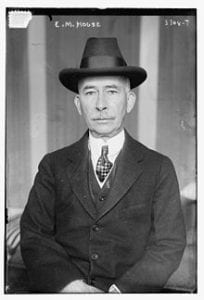 Colonel House is best known as an American diplomat who served as chief advisor to President Woodrow Wilson. In his earlier years in Texas, he ran his family’s business and founded the Trinity and Brazos Valley Railway. He was an influential “back stage” politician and helped James S. Hogg (1892), Charles A. Culberson (1894), Joseph D. Sayers (1898), and S. W. T. Lanham (1902) all become Governor of Texas. Hogg was the one to give House the honorary title of Colonel.
Colonel House is best known as an American diplomat who served as chief advisor to President Woodrow Wilson. In his earlier years in Texas, he ran his family’s business and founded the Trinity and Brazos Valley Railway. He was an influential “back stage” politician and helped James S. Hogg (1892), Charles A. Culberson (1894), Joseph D. Sayers (1898), and S. W. T. Lanham (1902) all become Governor of Texas. Hogg was the one to give House the honorary title of Colonel.
Upon moving to New York, he became influential in Woodrow Wilson’s campaign for president, and went on to become his most trusted advisor. House declined Wilson’s offer to have any cabinet position he’d like, preferring to work behind the scenes. In the 1916 reelection campaign, although as usual he served no official role, House “planned its structure; set its tone; guided its finance; chose speakers, tactics, and strategy; and, not least, handled the campaign’s greatest asset and greatest potential liability: its brilliant but temperamental candidate.”
House was played a major role in negotiating wartime democracy. He negotiated acceptance of Wilson’s Fourteen Points as a basis for a peace treaty to end WWI. He was then a member of the U.S. delegation to the Paris Peace Conference of 1919 and worked closely with Wilson to draft the covenant of the League of Nations.
House advocated for Polish independence, incorporated into Wilson’s Fourteen Points, which led to the reestablishment of Poland. He is considered a hero in Poland for his advocacy and a statue of House stands in Skaryszewski Park in Warsaw.
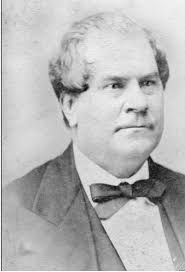 One of Houston’s first bankers, he conducted private banking as early as 1840. In 1838 House and Loveridge, bakers and confectioners, opened, producing and selling the first ice cream in Houston. After buying out a large jobbing business for the largest amount of money to change hands in Houston at the time, T.W. House and Company became the largest wholesaler in Texas. House served as Mayor of Houston in 1862.
One of Houston’s first bankers, he conducted private banking as early as 1840. In 1838 House and Loveridge, bakers and confectioners, opened, producing and selling the first ice cream in Houston. After buying out a large jobbing business for the largest amount of money to change hands in Houston at the time, T.W. House and Company became the largest wholesaler in Texas. House served as Mayor of Houston in 1862.
House was a prominent civic leader and played a key role in building Houston. He helped organize the Houston and Galveston Navigation Company as well as worked with the Texas Transportation Company, Houston Direct Navigation Company and the Buffalo Bayou Ship Channel Company, which all contributed to Houston’s development. His ships also ran the Union blockade during the Civil War. He is responsible for organizing Houston’s first public utility, Houston Gas Company, bringing gas to the city, and organizing the first street railway and other railroads. his ships ran the Union blockade during the Civil War; prominent civic leader.
One of his sons, Edward Mandell House (1858-1938), went on to become a diplomat and chief advisor to President Woodrow Wilson.
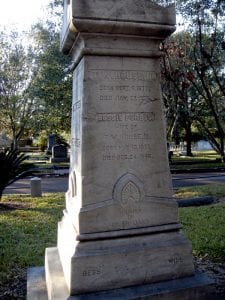 Partnered with Tom Ball and T.H. Guthrie in Country Club Estates, which in 1923/24 platted River Oaks, built the first River Oaks Country Club and golf course, and began selling lots. The partners later sold their interests to Will and Mike Hogg and Hugh Potter who continued development of River Oaks.
Partnered with Tom Ball and T.H. Guthrie in Country Club Estates, which in 1923/24 platted River Oaks, built the first River Oaks Country Club and golf course, and began selling lots. The partners later sold their interests to Will and Mike Hogg and Hugh Potter who continued development of River Oaks.
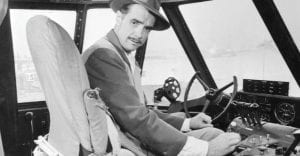 Billionaire and man of legendary accomplishments in business, aviation and film making. His net worth of $1.6 billion is equivalent to $6.6 billion in 2020. Hughes was born in Houston. Following his father’s death in 1923, he assumed control of the Hughes Tool Company at the age of 19, and an estate of nearly a million dollars.
Billionaire and man of legendary accomplishments in business, aviation and film making. His net worth of $1.6 billion is equivalent to $6.6 billion in 2020. Hughes was born in Houston. Following his father’s death in 1923, he assumed control of the Hughes Tool Company at the age of 19, and an estate of nearly a million dollars.
In the late 1920s he moved to Hollywood. His best-remembered films are the epic Hell’s Angels (1930) which he spent $4 million to produce, The Outlaw (1941), and Scarface (1983). His direction of Two Arabian Nights (1927) earned him an Academy Award for best comedy direction.
During WWII and the decade that followed, he pursued his fascination with aviation, forming Hughes Aviation. In 1935, he piloted one of his airplanes to a new world-speed record of 352.46 mph. Hughes Aircraft Company went on to be a major aerospace and defense contractor, receiving government contracts for development and manufacture of aircraft (including the failed wooden flying boat dubbed “The Spruce Goose”). In 1956 he acquired Trans World Airlines (TWA) and pushed it into the jet age.
By the late 1960s, he was becoming increasingly reclusive, eventually running his business empire from a penthouse atop the Desert Inn in Las Vegas. By the early 1970s, Hughes had become the largest single landholder in Nevada, and with around 8,000 Nevada residents on his payroll, Hughes was also the state’s largest employer. Hughes spent the last few years of his life living between hotels in the Bahamas, Nicaragua, Vancouver, London and Acapulco. He died on a flight from Acapulco to Houston.
Late in 1953, Hughes created the medical institute that Howard Hughes Medical Institute, funded through profits of the Hughes Aircraft Company, and the sale of the company after his death. The institute continues to be a leading biological and medical research institute and runs the largest privately funded education initiative in the US.
The 2004 film The Aviator depicted his early life, Howard Hughes played by Leonardo DiCaprio, who was nominated for an Academy Award for his portrayal.
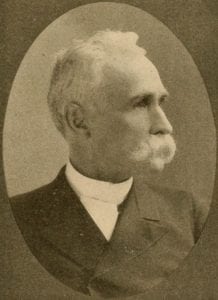 Joseph Hutcheson served in the Confederate Army during the Civil War under Stonewall Jackson and as commander of Company E, 14th Virginia Infantry. After the war, he studied law at the University of Virginia and moved to Texas to practice.
Joseph Hutcheson served in the Confederate Army during the Civil War under Stonewall Jackson and as commander of Company E, 14th Virginia Infantry. After the war, he studied law at the University of Virginia and moved to Texas to practice.
Joseph Hutcheson served in the Texas House of Representatives in 1890. As State Representative, he drafted bill that established the University of Texas. He went on to serve in the US House of Representatives from 1893-1897, declining to run for a third term.
His son Honorable Joseph C. Hutcheson, Jr. was a Mayor of Houston and a federal judge.
He also has a recipe for peas, published in The First Texas Cook Book, A Thorough Treatise on the Art of Cookery in 1883.
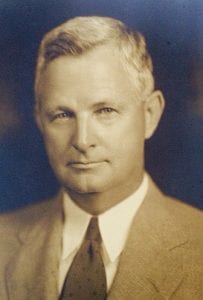 Judge Hutcheson served as chief legal adviser of Houston from 1913 to 1917 and as its Mayor in 1917–18. Hutcheson was nominated to the US District Court for the Southern District of Texas in 1918 by President Wilson, and then to the US Court of Appeals for the Fifth Circuit by President Hoover. He served as Chief Judge from 1948-1959. (Judge Hutcheson never had a major ruling overturned upon appeal.)
Judge Hutcheson served as chief legal adviser of Houston from 1913 to 1917 and as its Mayor in 1917–18. Hutcheson was nominated to the US District Court for the Southern District of Texas in 1918 by President Wilson, and then to the US Court of Appeals for the Fifth Circuit by President Hoover. He served as Chief Judge from 1948-1959. (Judge Hutcheson never had a major ruling overturned upon appeal.)
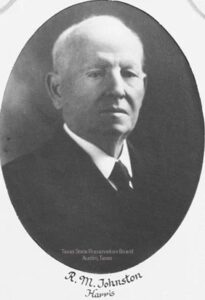 Newspaperman who served as editor of the Houston Post from 1885 to 1919. He is the namesake of Rienzi, the River Oaks home of his grandson, Harris Masterson I.
Newspaperman who served as editor of the Houston Post from 1885 to 1919. He is the namesake of Rienzi, the River Oaks home of his grandson, Harris Masterson I.
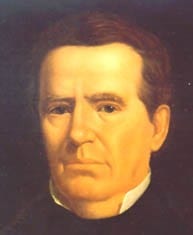 Physician who served as the last President of the Republic of Texas, and later became known as the “Architect of Annexation.” Although many believe Jones was among those who felt Texas had struggled too hard for independence to immediately surrender its sovereignty, when annexation occurred in 1846 Jones gave an eloquent speech at the capitol in Austin expressing hopes for a happy and perpetual union with the United States.
Physician who served as the last President of the Republic of Texas, and later became known as the “Architect of Annexation.” Although many believe Jones was among those who felt Texas had struggled too hard for independence to immediately surrender its sovereignty, when annexation occurred in 1846 Jones gave an eloquent speech at the capitol in Austin expressing hopes for a happy and perpetual union with the United States.
After the speech, Jones and Sam Houston lowered the flag of the Republic for the last time and raised the Stars and Stripes. The most significant contribution of Jones’ administration was his insistence that the Republic set up a university system for higher education. After annexation, Jones was defeated in several bids for legislative office and retired to private life.
Aside from his civic service, Jones established the first Masonic lodge in Texas, Holland Lodge #36. He was also a charter member and vice president of the Philosophical Society of Texas and helped found the Medical Association of Texas in 1853.
Both Anson and Jones County in Texas are named for him.
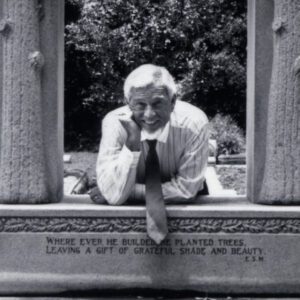 Architect who became interested in cemetery design in the 1960s and spent the rest of his life studying and documenting cemeteries around the world. He designed his own strikingly modern monument.
Architect who became interested in cemetery design in the 1960s and spent the rest of his life studying and documenting cemeteries around the world. He designed his own strikingly modern monument.
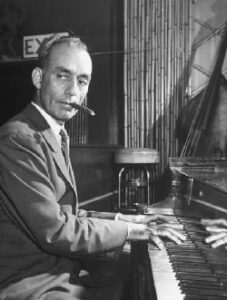 Famed jazz pianist and bandleader who became prominent with his ensemble Peck’s Bad Boys in the 1920s and ‘30s. Intensely private, he refused offers to join the bands of Bing Crosby, Paul Whiteman, and Artie Shaw, preferring to perform in and around Houston. Kelley lived most of his life in a home on Silver Street near Glenwood.
Famed jazz pianist and bandleader who became prominent with his ensemble Peck’s Bad Boys in the 1920s and ‘30s. Intensely private, he refused offers to join the bands of Bing Crosby, Paul Whiteman, and Artie Shaw, preferring to perform in and around Houston. Kelley lived most of his life in a home on Silver Street near Glenwood.
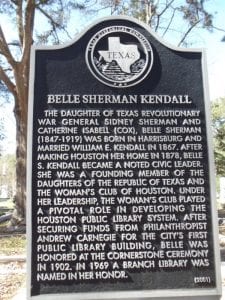 Belle Kendall was instrumental in obtaining funds from Andrew Carnegie for Houston’s first public library in 1902, and a branch library was named, posthumously, in her honor in 1969. Belle was one of the founding member of the Daughters of the Republic of Texas and the Woman’s Club of Houston.
Belle Kendall was instrumental in obtaining funds from Andrew Carnegie for Houston’s first public library in 1902, and a branch library was named, posthumously, in her honor in 1969. Belle was one of the founding member of the Daughters of the Republic of Texas and the Woman’s Club of Houston.
She was the daughter of General Sidney Sherman, who is credited with originating the battle cry, “Remember the Alamo!” at the Battle of San Jacinto, and who Sherman County and the city of Sherman are named after. The Belle Sherman Kendall Library and Community Center, opened in 2009, bears her name.
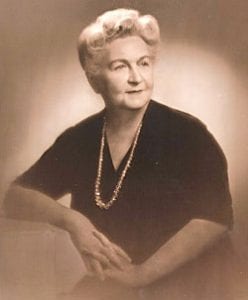 Founder of The Kinkaid School in 1906, the oldest private school still operating in Houston. After getting married in 1899 and finding married women were not allowed to teach in Houston, she invited seven students to take classes in her home.
Founder of The Kinkaid School in 1906, the oldest private school still operating in Houston. After getting married in 1899 and finding married women were not allowed to teach in Houston, she invited seven students to take classes in her home.
The Kinkaid School grew from the parlor of a one-story house to a 40-acre Memorial area campus. Mrs. Kinkaid is remembered by her alumni as a person of great spirit, determination and foresight who did not let discipline get in the way of her humanity.
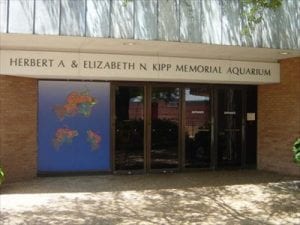 Engineer who platted the subdivisions of Broadacres and River Oaks and developed plans for Hermann Park and the Texas Medical Center. After laying out the River Oaks subdivision Kipp was made vice president of the River Oaks Country Club.
Engineer who platted the subdivisions of Broadacres and River Oaks and developed plans for Hermann Park and the Texas Medical Center. After laying out the River Oaks subdivision Kipp was made vice president of the River Oaks Country Club.
A specialist in drainage, Kipp also designed a portion of the drainage system at Glenwood and the retaining walls around the Forest Mound Section and along the road leading to Section G. His flood control additions were essential in protecting Glenwood from Buffalo Bayou. The present concrete bridge at the entrance of Glenwood at Washington avenue was designed by Kipp and built in 1921. Kipp consulted for Glenwood from 1919 to the 1950s.
The home of Elizabeth and Herbert Kipp is designated as a landmark in Houston, recognizing that “much of what we see and experience in central Houston is the work of Herbert Kipp.” There is also the Herbert A. & Elizabeth N. Kipp Memorial Aquarium at the Houston Zoo.
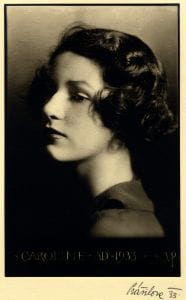 Caroline Weiss Law, daughter of Humble Oil co-founder Harry Carothers Wiess and Olga Wiess, was a renowned art collector and philanthropist and Andy Warhol even painted a portrait of her in 1976; “Caroline.” During her lifetime she donated millions to the M.D. Anderson Cancer Center, Baylor College of Medicine and Museum of Fine Arts, Houston. She was also a MFAH lifetime trustee.
Caroline Weiss Law, daughter of Humble Oil co-founder Harry Carothers Wiess and Olga Wiess, was a renowned art collector and philanthropist and Andy Warhol even painted a portrait of her in 1976; “Caroline.” During her lifetime she donated millions to the M.D. Anderson Cancer Center, Baylor College of Medicine and Museum of Fine Arts, Houston. She was also a MFAH lifetime trustee.
In 1998 the original building of the MFAH was renamed after her, recognizing her decades of generous support. After her death in 2003 her final bequest of paintings and assets to the MFAH was valued in excess of $400 million, including Andy Warhol pieces and two Picassos, and one of the largest bequests to an American museum. She also bequeathed $25 million to both M.D. Anderson and Baylor, who created the Caroline Wiess Law Scholar award in her honor.
Law “left arguably the greatest impact ever on the American museum – an influence that extended beyond dollars.”
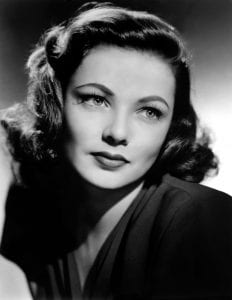 With prominent cheekbones, luminous skin and the most crystalline green eyes of her day, Gene Tierney’s striking good looks helped propel her to stardom.
With prominent cheekbones, luminous skin and the most crystalline green eyes of her day, Gene Tierney’s striking good looks helped propel her to stardom.
After time performing on Broadway, Gene Tierney signed on with 20th Century Fox and had her first role in Hudson’s Bay (1941). The Hollywood actress was best known for her title role in the 1944 film classic Laura. She also starred in The Ghost and Mrs. Muir, The Left Hand of God, and Advise and Consent. In 1945 she was nominated for a Best Actress Oscar for her portrayal of Ellen Brent in Leave Her to Heaven (1945).
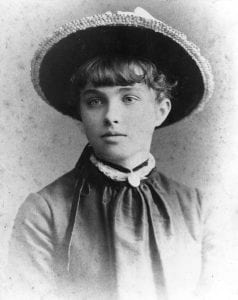 Author of histories of early Texas, and upon her death in 1935 her library of 1,500 works was donated to the Houston Public Library. She was instrumental in obtaining funds from Andrew Carnegie for Houston’s first public library, and, “Looscan Library,” is named in her honor.
Author of histories of early Texas, and upon her death in 1935 her library of 1,500 works was donated to the Houston Public Library. She was instrumental in obtaining funds from Andrew Carnegie for Houston’s first public library, and, “Looscan Library,” is named in her honor.
She was a charter member of the Daughters of the Republic of Texas, the Texas State Historical Association, and the Texas Woman’s Press Association. She served as president of the Texas State Historical Association from 1915 to 1925.
She was also the granddaughter of John R. Harris, founder of Harrisburg for whom Harris County is named. In addition to Looscan Library, the Adele B. Looscan Elementary School in Houston is also named in her honor.
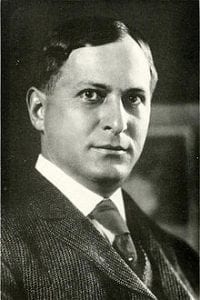 Edgar Odell Lovett was most known for serving as the founding President of Rice Institute (now Rice University). Before his role as president he was a mathematics professor at West Kentucky College. the University of Virginia, and Princeton, also lecturing at Johns Hopkins University and the University of Chicago. He was recommended for his role at Rice Institute by President Woodrow Wilson. He served as the first president of Rice from 1912-1946.
Edgar Odell Lovett was most known for serving as the founding President of Rice Institute (now Rice University). Before his role as president he was a mathematics professor at West Kentucky College. the University of Virginia, and Princeton, also lecturing at Johns Hopkins University and the University of Chicago. He was recommended for his role at Rice Institute by President Woodrow Wilson. He served as the first president of Rice from 1912-1946.
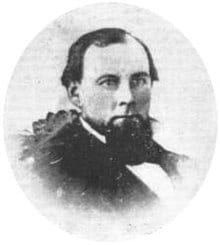 Thomas Saltus Lubbock is best known for organizing the Civil War regiment, Eight Texas Cavalry, known as Terry’s Texas Rangers with Col. B.F. Terry. After Col. Terry was killed in battle in 1861, Col. Lubbock was named commander. Prior to the Civil War, Lubbock he participated in the siege of Bexar during the Texas Revolution and was part of the Texan Santa Fe expedition. Lubbock County is named in his honor.
Thomas Saltus Lubbock is best known for organizing the Civil War regiment, Eight Texas Cavalry, known as Terry’s Texas Rangers with Col. B.F. Terry. After Col. Terry was killed in battle in 1861, Col. Lubbock was named commander. Prior to the Civil War, Lubbock he participated in the siege of Bexar during the Texas Revolution and was part of the Texan Santa Fe expedition. Lubbock County is named in his honor.
A graduate of Rice University and the University of Texas Law School, Lummis practiced law in Houston for 23 years with Andrews Kurth. In 1976, Lummis became the administrator of the Hughes estate and left Houston for Las Vegas, where he assumed the leadership of a variety of Hughes businesses.
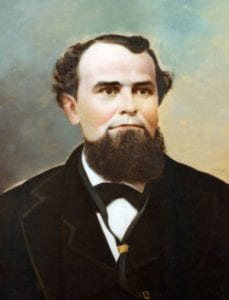 McAshan was a native Houstonian, prominent banker and philanthropist. He held the role of president of the South Texas Commercial National Bank for over thirty years. He was active in Shearn Methodist Church throughout his life. Known for his philanthropy, he also constructed and donated the building for McAshan Methodist Church.
McAshan was a native Houstonian, prominent banker and philanthropist. He held the role of president of the South Texas Commercial National Bank for over thirty years. He was active in Shearn Methodist Church throughout his life. Known for his philanthropy, he also constructed and donated the building for McAshan Methodist Church.
The Galveston Daily News said of McAshan, upon his death, that “But the crowning characteristic of the life of the man now dead was the spirit of liberality that has marked almost every action. None ever applied to him for help and left unassisted. Frequently he was imposed upon, but he always explained; ‘It is better to be fooled nine times than to turn away one man deserving of assistance.’ … It is as a philanthropist that he is known and honored as much as the successful man of affairs.”
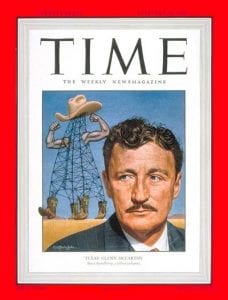 Oilman Glenn McCarthy was known as the “Legendary King of the Wildcatters” and “Diamond Glenn.” He began his career in the oilfields at age 8 where he worked as a waterboy for $.50 a day. He later embarked on numerous ventures, and between 1932 and 1942, he struck oil 38 times and had discovered 11 Texas oilfields by 1945. In 1949, he started building Houston’s famed Shamrock Hotel for $21 million, only a fraction of his wealth at the time.
Oilman Glenn McCarthy was known as the “Legendary King of the Wildcatters” and “Diamond Glenn.” He began his career in the oilfields at age 8 where he worked as a waterboy for $.50 a day. He later embarked on numerous ventures, and between 1932 and 1942, he struck oil 38 times and had discovered 11 Texas oilfields by 1945. In 1949, he started building Houston’s famed Shamrock Hotel for $21 million, only a fraction of his wealth at the time.
“McCarthy owned the McCarthy Oil and Gas Company, the Beaumont Gas Company, the Houston Export Company, KXYZ Radio, the McCarthy Chemical Company, the McCarthy International Tube Company, fourteen newspapers, a magazine, a movie-production company, the Shell Building, and two banks.” McCarthy was considered the model for the character of Jett Rink in Edna Ferber’s book Giant. Some of his most notable friends include John Wayne and Howard Hughes (1905-1976).
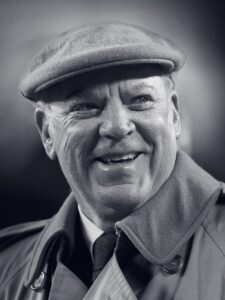 Houston Texans founder, Senior Chairman, and Chief Executive Officer who bought professional football back to Houston in 2002.
Houston Texans founder, Senior Chairman, and Chief Executive Officer who bought professional football back to Houston in 2002.
McNair and his charitable foundation gave more than $500 million to support education and medical research throughout his life.
President of Joe Myers Ford, one of the top volume dealerships in the country. He was active in community service, helping provide medical care for Houston’s disadvantaged children.
Concerned with Houston’s poor, she worked with her brother in law Dr. Judson Taylor to open the Maternal Health Center, the city’s first family planning clinic, in 1936. She and Taylor also partnered to build Houston’s first airport, Carter Field, in 1927 (now Hobby Airport).
Acclaimed modern architect who designed elegant homes and commercial buildings in postwar Houston. As chair of building committees for the Museum of Fine Arts, Houston and Alley Theatre, he helped some of the city’s finest contemporary structures take shape.
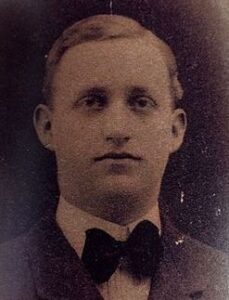 Banker who drowned trying to save his sister Daphne, who fell overboard during a boating trip. Daphne and her husband, Edwin L. Neville, later endowed construction of Palmer Memorial Episcopal Church in his memory.
Banker who drowned trying to save his sister Daphne, who fell overboard during a boating trip. Daphne and her husband, Edwin L. Neville, later endowed construction of Palmer Memorial Episcopal Church in his memory.
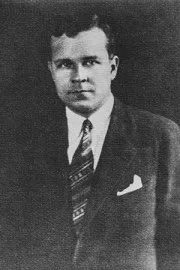 In partnership with Will and Mike Hogg, attorney Hugh Potter developed River Oaks. It was with Potter’s direction that began to turn those 1,100 acres into the development it is today. Bringing on landscape architects Hare and Hare, the master plan included space for the River Oaks Elementary, two shopping centers, a garden apartment complex and a church. River Oaks is one of the most expensive and desirable suburban developments in the Southwest.
In partnership with Will and Mike Hogg, attorney Hugh Potter developed River Oaks. It was with Potter’s direction that began to turn those 1,100 acres into the development it is today. Bringing on landscape architects Hare and Hare, the master plan included space for the River Oaks Elementary, two shopping centers, a garden apartment complex and a church. River Oaks is one of the most expensive and desirable suburban developments in the Southwest.
Civic leader and political operative who developed an interest in Houston’s underserved communities through volunteer work. She became an advocate for public housing, city planning and racial equality and served as publisher of the Texas Observer, which she helped establish.
Joining his older brother, William Marsh Rice, in Texas in 1850, he became a full partner with his brother in real estate investment, banking, rail and cotton. He married Charlotte Baldwin Randon, daughter of Mayor Baldwin, and niece of the “Mother of Houston” Charlotte Baldwin Allen. Following his brother’s murder in 1900, he joined Capt. James A. Baker in rescuing the Rice fortune that established Rice Institute (now Rice University). He was a founding Director and Treasurer of Glenwood from 1871 until 1892.
Upon his death, the Dallas Morning News called him “one of the oldest and most highly esteemed of all Houston’s townsmen” and “one of the best beloved citizens of Houston.”
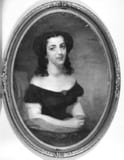 Although the wife of Houston’s wealthiest man, William Marsh Rice, she generously nursed their neighbors in epidemics. She worked to raise money and supplies for the Confederacy and for relief to war widows. Her death in 1863 at the age of 30 may have been caused by her nursing sick and wounded soldiers. She was also the daughter of Paul Bremond (1810-1885), of whom the town of Bremond in Robertson County and Bremond streets in Houston, Lufkin, and Nacogdoches are all named.
Although the wife of Houston’s wealthiest man, William Marsh Rice, she generously nursed their neighbors in epidemics. She worked to raise money and supplies for the Confederacy and for relief to war widows. Her death in 1863 at the age of 30 may have been caused by her nursing sick and wounded soldiers. She was also the daughter of Paul Bremond (1810-1885), of whom the town of Bremond in Robertson County and Bremond streets in Houston, Lufkin, and Nacogdoches are all named.
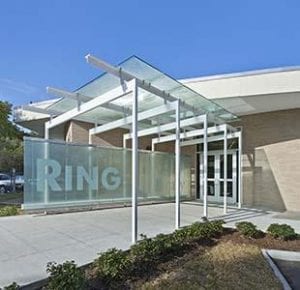 A trained social worker, Elizabeth Fitzsimmons Ring was a civic leader who was heavily involved in numerous reforms across the state. During WWI, she supervised community welfare program, as acting director (appointed by the Mayor) of the Houston Foundation. She went on to establish a publicly funded city recreation department. She also lobbied for various legislative efforts, including legislation that created Texas Woman’s University and legislation to protect women and children in industry. Her advocacy for prison reform in the 1920s led to the Texas Committee on Prisons and Prison Labor.
A trained social worker, Elizabeth Fitzsimmons Ring was a civic leader who was heavily involved in numerous reforms across the state. During WWI, she supervised community welfare program, as acting director (appointed by the Mayor) of the Houston Foundation. She went on to establish a publicly funded city recreation department. She also lobbied for various legislative efforts, including legislation that created Texas Woman’s University and legislation to protect women and children in industry. Her advocacy for prison reform in the 1920s led to the Texas Committee on Prisons and Prison Labor.
Elizabeth is best remembered for her efforts to bring public library services to Houston. As chairman of the Texas Federation of Women’s Clubs, she “convinced the governor of the need to appoint a state library commission.” She went on to form the Houston Federation of Women’s Clubs in 1900 and worked through that group to bring a Carnegie Library to Houston. In 1964, a branch of the Houston Public Library was named in her honor.
Used a $1 million trust left by her husband Daniel Ripley to support the Houston Settlement Association (now BakerRipley). The Ripley Foundation built Ripley House in the East End in 1940, then Houston’s largest social welfare project.
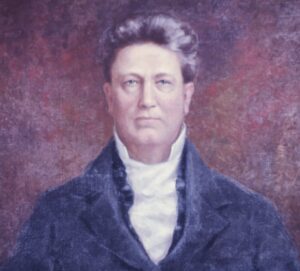
Mississippi governor from 1833 to 1835, he later moved to Texas and helped draft the state’s first constitution.
Egyptian-American investment manager and patron of Houston museums, music, and performing arts. His support also extended to Texas Children’s Hospital and the University of Texas Health Science Center at Houston.
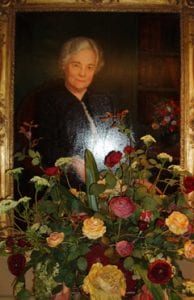 The most successful impresario in the Southwest, in her fifty-year career she brought to Houston such performers as Caruso, Rachmaninoff, Marian Anderson, John Philip Sousa and Will Rogers. Under her auspices, the Ballet Russe de Monte Carlo and the Metropolitan Opera appeared annually in Houston.
The most successful impresario in the Southwest, in her fifty-year career she brought to Houston such performers as Caruso, Rachmaninoff, Marian Anderson, John Philip Sousa and Will Rogers. Under her auspices, the Ballet Russe de Monte Carlo and the Metropolitan Opera appeared annually in Houston.
Using the name “Edna W. Saunders Presents,” the present-day Society for the Performing Arts evolved from her dedication to Houston’s cultural life. She considered bringing the Metropolitan Opera Company to Houston one of her greatest accomplishments. After convincing them to break their contract with entrepreneurs in Dallas, and the appreciation she helped garner for opera music, led to formation of the Houston Grand Opera in 1955.
In an article written about her life and legacy in the Houston History Magazine, it was said that “Edna Saunders planted the seeds that would grow and flourish to make Houston one of the nation’s major cultural centers.” The Green Room in the Jesse H. Jones Hall was named in her memory, and at the groundbreaking John T. Jones said of her, “Miss Edna gave 46 years of her vitality, vision, and good taste to the city. She left as a legacy the audiences which attend our Symphony concerts, the standing room crowds at Houston Grand Opera, the people who stand in line to buy tickets to the performances of the ballet…There were many who knew her, but among those who did not know her personally, there were hundreds of thousands who have profited from her effort.”
Grandson of Christ Church co-founder William Fairfax Gray, he served as rector of the congregation from 1905 to 1926 and became the first rector of Palmer Memorial Episcopal Church in 1929.
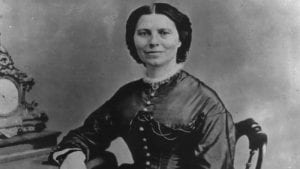 Dressed as a man, she served in the Union army during the Civil War as a soldier, enlisting under the pseudonym Frank Thompson. Her disguise worked, and she served for over a year as a solider, nurse and spy.
Dressed as a man, she served in the Union army during the Civil War as a soldier, enlisting under the pseudonym Frank Thompson. Her disguise worked, and she served for over a year as a solider, nurse and spy.
She was part of the First Battle at Bull Run, Battle of Blackburn’s Ford, and the Peninsular Campaign. When acting as a spy behind Confederate lines she would sometimes be “disguised” as a woman. After the war she was granted veteran’s pension, which noted her alias, and also became the only woman to be admitted into the Grand Army of the Republic.
After leaving the war, she worked as a nurse as Sarah Edmondson. She also went on to publish an embellished account of her experiences, Nurse and Spy in the Union Army, which was quite popular. She donated proceeds from her book to help veterans.
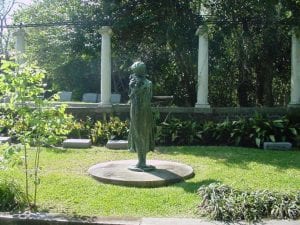 Devoted her wealth and talents to social welfare and world peace. Estelle Sharp was a member of the National Advisory Council of the League of Nations Association, where she worked to gain U.S. entry into the League. She was a founder of United Charities in Houston (now United Way). She also advocated for a settlement house concept and supported the Community Settlement Association. She was a member of the Texas Centennial Commission and Federated Women’s Clubs of Texas.
Devoted her wealth and talents to social welfare and world peace. Estelle Sharp was a member of the National Advisory Council of the League of Nations Association, where she worked to gain U.S. entry into the League. She was a founder of United Charities in Houston (now United Way). She also advocated for a settlement house concept and supported the Community Settlement Association. She was a member of the Texas Centennial Commission and Federated Women’s Clubs of Texas.
Widow of oil industry pioneer Walter B. Sharp (1870-1912) and interested in the history of the oil industry in the Southwest, she gave the first endowed lectureship at Rice Institute in 1918 and helped finance the Oral History of Texas Oil Pioneers at the University of Texas. She made her home at S. Main and Wheeler, known as “The Country Place” for his beautifully landscaped grounds, available to the Houston Design Studio, which nurtured the careers of John Staub, Ruth London and others. She was also a generous benefactor to Rice University, endowing the Sharp Lectureship in Civics and Philanthropy in 1918, and continued gifts to the university.
Oil producer Walter Benona Sharp started in the industry at a young age, contracting at 18 and oil prospecting in 1893 at 23. In 1893 he drilled for the Gladys City Oil and Gas Manufacturing Company on Spindletop Hill, only thirty yards from the spot where, eight years later, Spindletop would first gush. But at the time they had to abandon the well due to the soft quicksand.
Sharp also originated the use of drilling mud, which allowed drilling in soft and loose soils, and he became one of Texas’ leading oil men when his innovation resulted in the Spindletop gusher of 1901
Partnered with Howard Hughes, Sr. in the Sharp-Hughes Tool Company (Hughes Tool Company following Sharp’s death). The Sharp-Hughes Rock Bit they designed to drill through hard rock is still in use throughout the world.
“At the time of [his] death he ranked as one of the outstanding citizens of Texas and one of the most prominent figures in the Texas oil industry.”
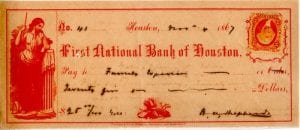 “Benjamin Armistead Shepherd was arguably the most prominent and enduring money lender in early Houston.” He was one of Houston’s first bankers and established a private banking house in 1855. Shepherd later founded Houston’s First National Bank and presided over it for nearly 25 years.
“Benjamin Armistead Shepherd was arguably the most prominent and enduring money lender in early Houston.” He was one of Houston’s first bankers and established a private banking house in 1855. Shepherd later founded Houston’s First National Bank and presided over it for nearly 25 years.
Shepherd, Texas is named after Shepherd, who proposed building the town (at the intersection of U.S. Highway 59, State Highway 150, and Farm roads 2666 and 222, sixty miles north of Houston in southeastern San Jacinto County) in 1875 along the proposed path of the Houston, East and West Texas Railway. He was also an early organizer of the Houston and Great Northern Railroad, along with William Marsh Rice.
One of Houston’s most generous philanthropists, he gave more than $150 million to local organizations during his lifetime and was known for his passion for ballroom dancing.
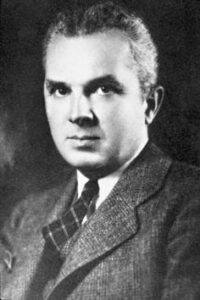 One of Houston’s finest residential architects from 1921 until his retirement in 1963. After receiving his degree in architecture from MIT, he worked as an apprentice for New York architect Harrie Thomas Lindberg. After an assignment for Lindberg in the Shadyside subdivision of Houston, Staub decided to stay and open his own firm in Houston where he remained for the rest of his career. His first commission was for the River Oaks Country Club. He was most known for his historically derived designs in Broadacres and River Oaks, including Ima Hogg’s mansion at Bayou Bend. He also designed six of the homes in Courtland Place, a number of which are on the National Register and five individually designated as Houston landmarks.
One of Houston’s finest residential architects from 1921 until his retirement in 1963. After receiving his degree in architecture from MIT, he worked as an apprentice for New York architect Harrie Thomas Lindberg. After an assignment for Lindberg in the Shadyside subdivision of Houston, Staub decided to stay and open his own firm in Houston where he remained for the rest of his career. His first commission was for the River Oaks Country Club. He was most known for his historically derived designs in Broadacres and River Oaks, including Ima Hogg’s mansion at Bayou Bend. He also designed six of the homes in Courtland Place, a number of which are on the National Register and five individually designated as Houston landmarks.
He was twice appointed to the Houston City Planning Commission, and he also served on the Advisory Committee of the Bayou Bend Collection of the Museum of Fine Arts, Houston. Outside of his residential work, Staub designed the parish house of Palmer Memorial Church (1930), the Junior League Building (1930), the Bayou Club (1940), the Fondren Library at Rice University among other buildings at the university as well as buildings at the University of Houston and in the Texas Medical Center.
Son of Austrian immigrants who spent his childhood traveling from ranch to ranch with his parents offering on-site leathercraft. He opened his own saddlery in Fort Bend County and relocated to Houston in 1887. Stelzig’s operated until the 1980s, becoming one of the city’s best-known western wear shops
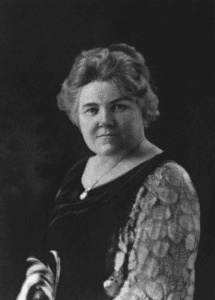 Early executive with Humble Oil, she was a pioneering woman in Texas business. She advocated for equal rights and published The Woman’s Viewpoint, a magazine dealing with women’s issues, from 1923 to 1927.
Early executive with Humble Oil, she was a pioneering woman in Texas business. She advocated for equal rights and published The Woman’s Viewpoint, a magazine dealing with women’s issues, from 1923 to 1927.
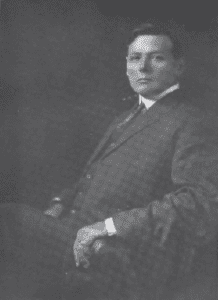 Sterling was the 31st Governor of Texas, serving one two-year term from 1931-32.
Sterling was the 31st Governor of Texas, serving one two-year term from 1931-32.
In 1911, before entering politics, he co-founded Humble Oil Company (now part of Exxon Mobil) with his siblings Frank and Florence Sterling as well as other prominent oilman, including Harry Weiss (1887-1948) and R.L. Blaffer (1876-1942). Sterling was also involved in the railroad industry, serving as chairman of the Texas Railroad Commission, banking, and the newspaper business. In 1925/1926 he bought the Houston Post and Houston Dispatch and subsequently combined them into the Houston Post-Dispatch, later just the Houston Post.
After his term as governor, he served as president of the Sterling Oil and Refining Company from 1933 to 1946. He was also president of the American Maid Flour Mills and the R. S. Sterling Investment Company and chairman of the Houston National Bank and the Houston-Harris County Channel Navigation Board.
Two Texas high schools and a middle school, Sterling High School in Baytown, and Sterling High School in Houston, Ross Sterling Middle School, Humble, Texas, are named for him
The Sterling mansion down in La Porte, Texas was designed to look like the White House.
Legendary TV anchorman, popular host of The Eyes of Texas and football announcer for the Southwest Conference and Houston Oilers. He raised millions of dollars for muscular dystrophy and supported the study of Texas history with documentaries, books, and a charitable foundation.
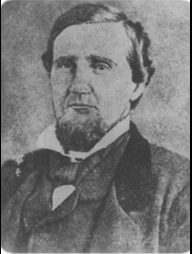 Before his short service in the Civil War, Terry had made a name for himself in Texas. In partnership with William Kyle, he constructed the first railroad in Texas, the Buffalo Bayou, Brazos and Colorado Railway. Terry had also purchased the Oakland sugar plantation in Fort Bend County in 1852 and became a prosperous sugar planter. By 1860 Terry and Kyle had $300,000 worth of property, almost $10 million in today’s dollars. His popularity and wealth landed him a delegate spot at the Secession Convention, which led to him later going to volunteer his services to the Confederate army.
Before his short service in the Civil War, Terry had made a name for himself in Texas. In partnership with William Kyle, he constructed the first railroad in Texas, the Buffalo Bayou, Brazos and Colorado Railway. Terry had also purchased the Oakland sugar plantation in Fort Bend County in 1852 and became a prosperous sugar planter. By 1860 Terry and Kyle had $300,000 worth of property, almost $10 million in today’s dollars. His popularity and wealth landed him a delegate spot at the Secession Convention, which led to him later going to volunteer his services to the Confederate army.
As a volunteer, Terry organized and commanded the Civil War regiment, Eight Texas Calvary, known as Terry’s Texas Rangers. Colonel Terry was killed in the first battle fought by the regiment in Woodsonville, Kentucky in 1861.
Texas Governor Lubbock said of his death, before the Texas Senate, that “no braver man ever lived-no truer patriot ever died.”
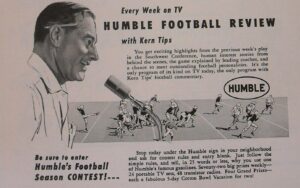 Sportscaster known as the “Voice of the Southwest Conference” for his 32 years broadcasting Texas college football games.
Sportscaster known as the “Voice of the Southwest Conference” for his 32 years broadcasting Texas college football games.
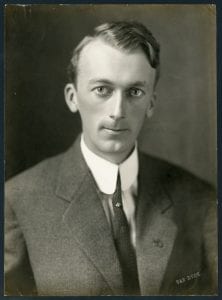 Came to Houston in 1910 to oversee construction of Rice Institute for Boston firm of Cram, Goodhue and Ferguson. He remained in Houston, appointed by Edgar Odell Lovett (1871-1957), to head the architecture department at Rice, where he established a prolific practice, which included design of the original building of the Museum of Fine Arts-Houston and many educational institutions and churches.
Came to Houston in 1910 to oversee construction of Rice Institute for Boston firm of Cram, Goodhue and Ferguson. He remained in Houston, appointed by Edgar Odell Lovett (1871-1957), to head the architecture department at Rice, where he established a prolific practice, which included design of the original building of the Museum of Fine Arts-Houston and many educational institutions and churches.
Watkin’s residential clientele included the Howard Hughes family. Watkin was responsible for the oak allees in Broadacres, as well as other design features of that neighborhood. Watkin was a specialist in church architecture and, between 1926 and 1947, built a number of chapels and churches, including Trinity Episcopal Church. He also designed the Hughes and Carter-Crain grave sites at Glenwood.
Homebuilder and real estate broker who negotiated the land deal for Houston Center, a massive mixed-use downtown development. He chaired the Contemporary Arts Association and was instrumental in construction of the Contemporary Arts Museum Houston in 1972.
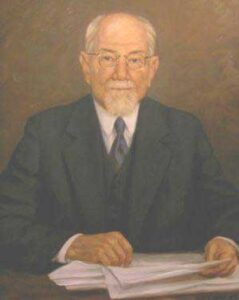 Oilman whose estate endowed the Robert A. Welch Foundation, which has donated millions of dollars in support of chemical research and higher education.
Oilman whose estate endowed the Robert A. Welch Foundation, which has donated millions of dollars in support of chemical research and higher education.
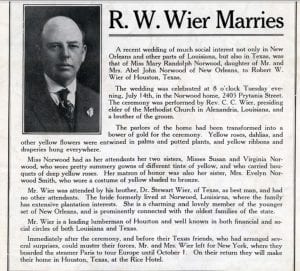 Wier was a prominent lumberman and businessman. After moving to Houston in 1899, he organized the R. W. Wier Lumber Company, and was president. He was also a director of various banks and utility companies, a Trustee of the Hermann Hospital Estate, and President of Texas Forestry Association.
Wier was a prominent lumberman and businessman. After moving to Houston in 1899, he organized the R. W. Wier Lumber Company, and was president. He was also a director of various banks and utility companies, a Trustee of the Hermann Hospital Estate, and President of Texas Forestry Association.
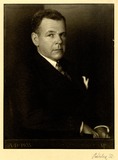 After graduating from Princeton in 1909 with an engineering degree Wiess became president of Reliance Oil. Then in 1917, he co-founded Humble Oil (now part of Exxon Mobil) with Frank, Florence, and Ross Sterling (1875-1949), and R.L. Blaffer (1876-1942) and served as the fourth president from 1937 until his death in 1948.
After graduating from Princeton in 1909 with an engineering degree Wiess became president of Reliance Oil. Then in 1917, he co-founded Humble Oil (now part of Exxon Mobil) with Frank, Florence, and Ross Sterling (1875-1949), and R.L. Blaffer (1876-1942) and served as the fourth president from 1937 until his death in 1948.
Continuing a family tradition of philanthropy, Harry and his wife Olga, pledged the income from 30,000 shares of Humble Oil for 17.5 years to Rice Institute, which ultimately generated over $1 million for the university. Wiess College at Rice University was named in his honor. His daughter Caroline Wiess Law (1918-2003), was a renowned art collector and took after her parents philanthropic nature.
In an address to Wiess College in 1958, then Rice University President W. V. Houston had this to say of his friend Harry Wiess:
“Those of you who plan to be engineers can think of him as a great engineer bringing to his management activities the feel for scientific and technical matters so important in the great industrial enterprises of today. Those of you who plan to go into business can think of him as one of the industrial pioneers of Beaumont and of Houston, one whose skill and effectiveness contributed greatly to the growth and prosperity of those cities. Those of you interested in history can see in him one of the men who helped make the recent history of Texas a bright one. All of you can think of him as one who gave of his resources, but chiefly of his mind and his heart, that you might enjoy the facilities you have today, that you also may look forward to a good future.”
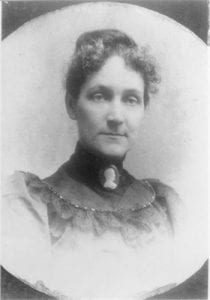 Margaret Houston was the third child and second daughter of General Sam Houston. After learning to write at Baylor Academy, “Maggie” served as her father’s secretary. When she died in 1906, the flag at the Alamo flew at half-staff and the city bells in Houston rang in her honor.
Margaret Houston was the third child and second daughter of General Sam Houston. After learning to write at Baylor Academy, “Maggie” served as her father’s secretary. When she died in 1906, the flag at the Alamo flew at half-staff and the city bells in Houston rang in her honor.
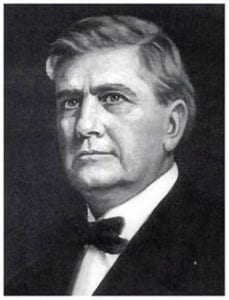 Co-founder, with his son, Gus S. Wortham, of John L. Wortham and Son, one of the nation’s largest retail insurance brokerage and risk services firms. His son Gus went on to incorporate the American General Insurance Company in 1926, which is now one of the largest publicly traded companies. John was on the Railroad Commission of Texas and served as Secretary of the State of Texas in 1913.
Co-founder, with his son, Gus S. Wortham, of John L. Wortham and Son, one of the nation’s largest retail insurance brokerage and risk services firms. His son Gus went on to incorporate the American General Insurance Company in 1926, which is now one of the largest publicly traded companies. John was on the Railroad Commission of Texas and served as Secretary of the State of Texas in 1913.
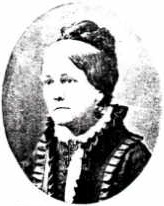 The “Mother of Hood’s Brigade,” she designed Hood’s Texas Brigade’s flag and composed inspirational writings for the Confederate soldiers using the pen names “The Confederate Lady” and “The Soldier’s Friend.” Matilda was Texas’ state botanist in 1872-1873. She also wrote the first textbook on Texas botany, Familiar Lessons in Botany, with Flora of Texas (1873.)
The “Mother of Hood’s Brigade,” she designed Hood’s Texas Brigade’s flag and composed inspirational writings for the Confederate soldiers using the pen names “The Confederate Lady” and “The Soldier’s Friend.” Matilda was Texas’ state botanist in 1872-1873. She also wrote the first textbook on Texas botany, Familiar Lessons in Botany, with Flora of Texas (1873.)
Physician, journalist and author of A Thumb-Nail History of the City of Houston, Texas (1912) and True Stories of Old Houston and Houstonians (1913). He co-founded the Houston Post in 1880.
Glenwood Cemetery
2525 Washington Avenue
Houston, Texas 77007
P: 713.864.7886
F: 713.864.6429
Cemetery Hours:
7 a.m. – 5:30 p.m.
Office Hours:
Monday – Friday
8 a.m. – 4:30 p.m.